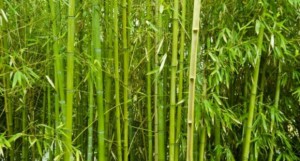LUCENA CITY, Philippines—An environmentalist group and the government and residents of Barangay (village) Laiban in Tanay town, Rizal province, have joined hands in planting bamboo amid threats posed by climate change and a controversial dam project in the Sierra Madre.
“Considering the findings of authorities on bamboo that it can greatly increase the capacity of watersheds, why should there be a future Laiban Dam at all?” Joey Papa, president of Bangon Kalikasan Ecology Centers/Movement (BKEC-M), said in a phone interview last week.
Manila’s water supply
The public-private partnership dam project is planned to be constructed in the upper Kaliwa River in Laiban. It seeks to divert water from the mountain river system to augment Metro Manila’s critical supply of potable water, but it will inundate 28,000 hectares of watershed and affect 3,708 families.
“For [environmental protection] advocates like us, we cannot just protest the cutting of trees. We must plant trees and bamboo. We must walk the talk,” Papa said.
Bamboo growing
BKEC-M is promoting bamboo growing, in coordination with the Rizal provincial government and the Department of Environment and Natural Resources (DENR) under its National Greening Program (NGP), in response to the need to reforest as many degraded areas at the shortest time.
Bamboo helps natural water reserves accumulate water faster, reduces carbon emissions and protects communities from hazards due to extreme climate events, Papa said.
On slopes, riverbanks
Laiban villagers, including Dumagat tribe members, started to plant bamboo on the slopes and riverbanks of the barangay on Saturday. They hope to plant more than 30,000 bamboo culms (stems) within a week.
The bamboo culms are being provided by a network of bamboo growers who are also advocating for more bamboo to be planted nationwide, Papa said.
Harvest in two years
Within two years, the bamboo will be ready for harvest to generate livelihood.
Participants in the bamboo-planting project will be paid by the DENR from its NGP fund. Some of them will be chosen to help maintain and protect the grass in the next three years.
